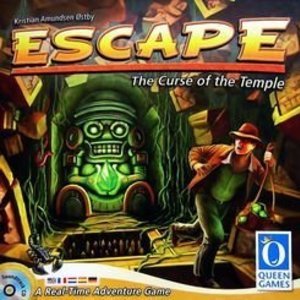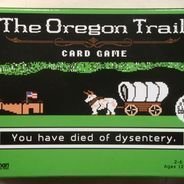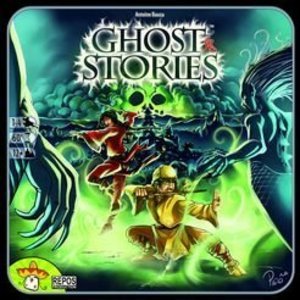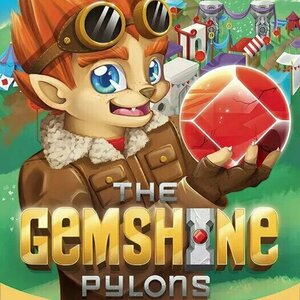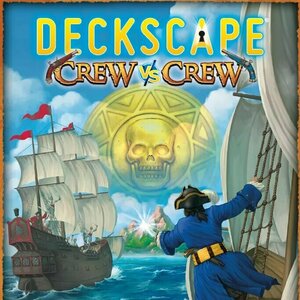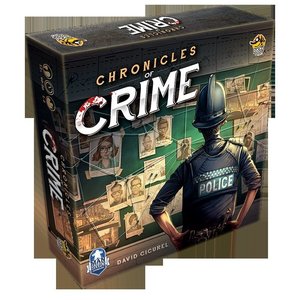Purple Phoenix Games (2266 KP) rated Escape: The Curse of the Temple in Tabletop Games
Jul 16, 2019 (Updated Dec 10, 2019)
Your latest quest has brought you and your comrades to an ancient temple. While exploring, you come across a treasure cache – score!! Your team decides to take it…for research purposes of course…but unbeknownst to you, this temple and its treasure are cursed, and you have just literally brought that curse down upon yourselves. The temple begins to collapse, and you and your team must make it to the exit alive! But wait, which way did you come from? Seriously? Did nobody leave any breadcrumbs? Which path is the right way? Too late to ask questions, just go! Traverse your way through this maze of a temple and get out! Will you make it out? Will your comrades make it too? I guess you’ll just have to wait and see…
DISCLAIMER: There are several expansions to this game, but we are not reviewing them at this time. Should we review them in the future we will either update this review or post a link to the new material here. -T
Escape: The Curse of the Temple is a real-time cooperative game in which players must roll dice, uncover new tiles, and find their way to the exit before the temple collapses, trapping the explorers inside. Played in exactly 10 minutes, all actions are taken simultaneously – you are trying to escape after all! By rolling dice, players can uncover new rooms and find magic gems. Once the exit tile has been discovered, all players must make their way to it and out of the temple! Strategy is key – do you move as a group in the same direction (there is safety in numbers…) or do you split up in an attempt to find the exit more quickly? That’s up to you and your team to decide – but decide quickly, because time is running out!
One super neat thing about this game is the countdown timer/soundtrack. When I say the game takes 10 minutes to play, I mean that literally – there is a timer! The corresponding soundtrack really brings the theme to life and creates a unique atmosphere. The pressure of a time limit means that players are frantically rolling dice and moving throughout the temple, just as they would be frantically searching for the exit in the real world. For a pretty simple game of dice-rolling, I think the timer adds to the overall excitement of the game – without it, there is no element of urgency and the theme would not feel as authentic.
That being said, timers kind of stress me out in games. One thing that can alleviate some of the pressure created by the timer is being able to work as a group. Cooperation is important to success because everyone wins or loses together. I don’t have to race against the clock on my own, I just need to do my part to help the group succeed. Whether it’s uncovering new room tiles or pooling dice with another player to find magic gems, winning Escape is, overall, a group effort.
If you’ve never played a real-time game or one with a timer before, I would recommend Escape: The Curse of the Temple. It’s simple enough to be a good introduction to the mechanics, yet engaging and exciting enough to keep you coming back. Purple Phoenix Games gives it a heart-pounding 17 / 24.
Purple Phoenix Games (2266 KP) rated The Oregon Trail Card Game in Tabletop Games
Nov 7, 2019
The Oregon Trail Card Game is a cooperative game of hand management in which players are trying to make it all the way down the Oregon Trail! Players take turns playing Trail cards to advance on their journey, stopping at forts and towns along the way to collect supplies, and dealing with the Calamities of the open Trail – whether that’s fording across rivers or dealing with nasty rattlesnake bites. Do you and your party have what it takes to survive, or will the trail claim more lives in the end?
Ok so first things first – for nostalgia’s sake, this game is great. The artwork is a call-back to the original 8-bit design, the Calamities you may encounter are taken right from the computer game (there IS a “You have died of Dysentery” card), and the game is as hard to win as you remember. It definitely makes for a fun walk down memory lane.
Now, actually PLAYING the game is a different story. I think it’s a pretty bad attempt at a card game. For starters, the rulesheet (it’s more of a brochure than a book…) is extremely ambiguous. I had more questions about how to play after I read the rules than I did beforehand. The physical layout of the rules feels choppy, which makes it hard to logically follow, and the wording for some rules feels like it contradicts other rules. Overall, it just seems like the rulesheet was written in one go with no refining or editing – every single thought was thrown in and then not checked for accuracy or clarity.
Beyond the calamity that is the rulesheet, the game is hard to beat. The rules even say “More likely, the game ends when the last player dies.” Like even the creators know it’s impossible! I’ve never won a game because it is stacked against the players from the start. For starters, the game is so long. Without going too much into detail, by the end of the game 50 out of the 58 trail cards will be used – that’s almost ALL of them! And almost every card has a text action/consequence associated with it, which really reduces your likelihood of success. Some Calamity cards kill off players with no chance for remedy first, while some Trail cards are dictated by die rolls that can also either kill you or cause you to draw extra Calamity cards. I know the original game was tough, but since this card game is more based on the luck of the draw than your decisions, it feels futile to play. Luck-based games, when executed well, can be pretty fun. But unfortunately, it just doesn’t work for me in this game.
So do I like this game? Kind of? I like it for nostalgic purposes, but beyond that I really don’t. The rules make no sense and I feel like I interpret them differently every time – so who knows if I’ve actually ever played correctly. I have never won a game, the furthest I’ve ever gotten has been about halfway through to the end. Should you try The Oregon Trail Card Game? Probably not. You’re not really missing a lot besides reliving some childhood memories. Fun idea, but awful execution, in my opinion! Purple Phoenix Games (with guest score from a pal of Travis) gives The Oregon a Trail Card Game a choleric 12 / 24.
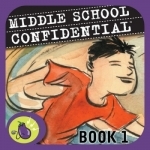
MSC1: Be Confident in Who You Are
Book and Education
App
Now for iPhone and iPad! • “As you prepare for back to school, don't forget the anxiety...[this...

Sentinels of the Multiverse
Games
App
=============================== “This is a must have addition to your digital board game...
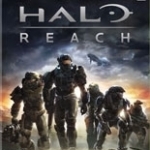
Halo Reach
Video Game
Because Halo is the best-selling Xbox franchise of all-time, the developers at Bungie had their work...
Matthew Krueger (10051 KP) rated Ghost Stories in Tabletop Games
Jul 28, 2020 (Updated Jul 30, 2020)
Gameplay:
Each Player represents a Taoist monk working together with the others to fight off waves of ghosts.
The players, using teamwork, will have to exorcise the ghosts that appear during the course of the game. At the beginning of his turn, a player brings a ghost into play and places it on a free spot, and more than one can come in at the same time. The ghosts all have abilities of their own – some affecting the Taoists and their powers, some causing the active player to roll the curse die for a random effect, and others haunting the villager tiles and blocking that tile's special action. On his turn, a Taoist can move on a tile in order to exorcise adjacent ghosts or to benefit from the villager living on the tile, providing it is not haunted. Each tile of the village allows the players to benefit from a different bonus. With the cemetery, for example, Taoists can bring a dead Taoist back to life, while the herbalist allows to recover spent Tao tokens, etc. It will also be possible to get traps or move ghosts or unhaunt other village tiles.
To exorcise a ghost, the Taoist rolls three Tao dice with different colors: red, blue, green, yellow, black, and white. If the result of the roll matches the color(s) of the ghost or incarnation of Wu-Feng, the exorcism succeeds. The white result is a wild color that can be used as any color. For example, to exorcise a green ghost with 3 resistance, you need to roll three green, three white, or a combination of both. If your die rolls fall short, you can also use Tao tokens that match the color in addition to your roll. You may choose to use these after your roll. Taoists gain these tokens by using certain village tiles or by exorcising certain ghosts. One of the Taoists has a power that allows him to receive such a token once per turn.
To win, the players must defeat the incarnation of Wu-Feng, a boss who arrives at the end of the game. There are also harder difficulty levels that add more incarnations of Wu-Feng, in which to win, you must defeat all of them.
There are many more ways to lose, however. The players lose if three of the village's tiles are haunted, if the draw pile is emptied while the incarnation of Wu-Feng is still in play, or if all the priests are dead.
It is hard game but the strategy to this game is excellent cause you have to think about your moves and what to do next. That and the clock is ticking down to one of the ten Wu-Feng Minions. Also if 3 village spaces get crushed than you lose. Also the luck of the dice and the cards. The strategy is ten fold. Its hard but a excellent game and a must play game. Buy it if you havent already cause its a must. If you want to learn more or see a runthrough of the game go to BoardGameGeek, Rahdo Runthroughs or Dice Tower Reviews.
Purple Phoenix Games (2266 KP) rated The GemShine Pylons in Tabletop Games
Mar 17, 2021
Disclaimer: We were provided with a prototype copy of this game for the purposes of this preview. This is not a production copy of the game. The game also came with rules for solo play and cooperative play, but this preview will be covering the base rules of competitive play. I will be providing a general overview of the gameplay, and will not be rehashing the entire rulebook in this preview! -L
The GemShine Pylons is an economic game of hand management in which players are trying to build, power, and decorate Pylons in an effort to earn the most end-game points. To setup the game, shuffle the deck of Pylon cards, deal 1 face-down to each player as their starting Pylon, and deal 5 face-up next to the deck to serve as the market. Place the Timing Card at the bottom of the Pylon deck, with the appropriate player-count side face-up. Place the Setup card at the end of the market line, and place a random gem from the bag onto the empty gem slot. Above the market line, create 4 piles of Decoration cards, based on the number of Representatives on each card. Each player receives 4 random gems to their personal supply, a starting player is selected, and the game is ready to begin! The setup should look similar to the picture below.
The GemShine Pylons is played over a series of rounds in which players take turns performing actions. On your turn, you will perform one of three actions: Purchase a Card, Gather Gems, or Build a Pylon. To Purchase a Card, you will select a card from the market and pay its cost. There are 3 different costs for purchasing cards – leave 1 gem, leave 2 gems, or discard 1 Pylon. To leave 1 or 2 gems, you will select a gem (or 2) from your personal supply and place it in the spot emptied by the card you have purchased. When you discard a Pylon, you will take a Pylon from your tableau and discard it in order to purchase said card. Once a card has been purchased, you resolve the effect shown. These effects could be: gaining gems, placing gems onto Pylons/Decorations, gaining Pylons, or ‘purchasing’ Decorations. You may choose to not perform any/all effects on a card. Certain market cards have a number/color of Representatives on the bottom, and those are used to purchase Decorations. Every Decoration has a Representative cost, and you must discard cards from your hand with the matching color Representatives equal to the Representative cost. After performing the action on the card, it now goes into your hand.
To Gather Gems, you will take all the gems that are present in the market line, including the gem on the Setup card. These gems go directly into your personal supply. Any cards that were left in the market line are discarded, and the market is filled with 5 new cards from the Pylon deck. Select a random gem to be placed on the Setup card. To Build a Pylon, you will select a card from your hand and place it face-down in your tableau – it is now a Pylon. Play continues in this fashion, alternating turns, until the Pylon deck is depleted and the Timing Card is revealed. The game ends at the end of the current round. Points are now tallied – from Decorations and gems in slots. Players count up their points from any Decoration cards in their tableau. All players then reveal the cards in their hands, and the total number of Representatives for each color – blue, red, and white – are counted. The color that has the highest number of Representatives across all players combined is worth 4 points, the next highest is worth 2 points, and the lowest is worth 1 point. Players will then go through their gems in slots, counting up points based on the color majorities. Only gems in slots earn end-game points – any gems in your personal supply are not counted. Add up gem points and Decoration points, and the player with the highest score wins!
I know that may seem like a lot, but I do have to say that once you get going, the gameplay is pretty streamlined and straightforward. You only have 3 main action options each turn. If you purchase a card from the market, there are essentially 4 different effect options on each card. That being said, the small number of actions/effects do not stop the gameplay from being strategic. Most cards in the market require you to pay 1 or 2 gems, leaving them in the market line and available for your opponents to collect. How badly do you need that effect, and which color gem do you give up? Maybe the available cards only have blue Representatives but you only need 1 more red Representative to claim a Decoration – should you snag that blue in hopes of using it later in the game? Or do you go for a card that allows you to place gems, thus powering your Pylons and earning you points at the end of the game. But if you wait too long, your opponent may just buy the Decoration you were saving towards – seems to happen to me every time! It is also important to note that when you buy a Decoration, it can only be attached to a gem-powered Pylon. So you’ve got to balance having enough gems to power your Pylons, as well as having enough gems to purchase cards from the market. AND the different colored gems will earn varying amounts of points at the end of the game – do you want to risk going all in on red gems in hopes of scoring big, or should you try to collect gem colors evenly and spread those points around. There’s no single right way to play, and your strategy must be evolving constantly as the market line and available Decorations change throughout play.
Let me touch on components for a moment. Although we received a prototype copy of the game, the artwork is finalized and ready for production. The art style is relatively simple, yet nice to look at and thematically appropriate. I want to applaud the iconography on the cards as well, as it is very straight-forward and easy to understand. The cards have no text on them at all, but the consistency of the icons and simplicity of their explanations make them very easy to comprehend. The gems themselves are chunky and fun to play with, and make the game feel a little more immersive!
Overall, I really like The GemShine Pylons. The gameplay is straightforward, relatively simple, yet requires a decent amount of strategy. Every game feels exciting and unique, as everyone really is at the mercy of the deck shuffle. The artwork is thematic, the iconography is simple and clear, and the gameplay feels fresh. Even though this is only a prototype copy of the game, I am excited to have it in my collection, and am already thinking about my strategy for my next play. I am eager to try out the solo and cooperative modes as well, but the competitive rules themselves are engaging and entertaining. If you’re looking forward to a strategic, yet quick game, give The GemShine Pylons a try. I look forward to following this Kickstarter campaign and seeing what other goodies Game Elemental has in store!
Purple Phoenix Games (2266 KP) rated Deckscape: Crew vs Crew - The Pirate's Island in Tabletop Games
May 20, 2021
These one-shot escape room style games are difficult to explain without major spoilers, so I will try to explain what I can as best I can. Please don’t flame me for being vague. I am protecting you.
DISCLAIMER: We were provided a copy of this game for the purposes of this review. This is a retail copy of the game, so what you see in these photos is exactly what would be received in your box. I will describe the overall game flow and major rule set so that our readers may get a sense of how the game plays. For more info, you may purchase a copy online or from your FLGS. -T
To setup, open the box and take out the cards. Done. Read Card 1.
This one is quite a bit different from previous Deckscape games I have played in several ways. First, this is a head-to-head game where two players (or teams of players) will be taking sides of two pirate captains and attempting to figure out the answers to puzzles offered on cards in the game. Each side will have equal time and opportunity to solve the puzzles, but the first side to claim that they have solved it will be able to flip over the puzzle card to check for accurate answers. If they have succeeded, they earn the booty. If they fail, the other team has a chance to complete the puzzle successfully.
Play continues through the deck of cards with each side engaging in battles of wits until the end of the game draws near. The side with the most booty earned will be the winner and the game can then be passed along to another group of players to enjoy.
Components. This is a box of cards. The cards are all bigger than normal playing cards and feature pretty great art and vivid colors. I totally dig the pirate theme, so I was already destined to enjoy to aesthetic, but I do believe this is the better-looking game of the ones I have tried in its family.
Gameplay is also so different from the other two games in the Deckscape system and that’s a great thing. Having this head-to-head style really suited my situation when I played it: my 10-year-old niece was bored while her twin brother was at baseball practice, so I invited her to play this with me. Long story short, she ended up beating me by one point in the end, so that made her incredibly happy. I also highly enjoyed my playthrough of it, even in defeat.
I wish I could speak more on the specifics why I liked this, but again, as River Song would say, “Spoilers.” Do know that of the three Deckscape games I have played, I believe this is the best of the group. The puzzles are all fantastic, and I feel like I had a good handle on the solutions, but my niece obviously beat me to them more often than I would have liked to have admitted. That said, I can recommend this one to anyone interested in the Deckscape system with one caveat: this is head-to-head instead of the typical cooperative experience in the series. So you have been warned. It’s very good, though, so do check it out. Purple Phoenix Games (with guest score from my niece Keira) gives this one a puzzly 10 / 12, If you are wanting a little different flavor in your bottle of rum, grab a copy of this and enjoy. Just play it with someone your own age, or prepare to BE owned.
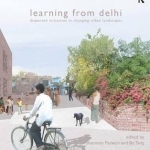
Learning from Delhi: Dispersed Initiatives in Changing Urban Landscapes
Maurice Mitchell, Bo Tang and Shamoon Patwari
Book
The inflexibility of modern urban planning, which seeks to determine the activities of urban...
Purple Phoenix Games (2266 KP) rated Chronicles of Crime in Tabletop Games
Jul 1, 2021
Chronicles of Crime is an app-driven storytelling, deduction, adventure board game that can be played solo or cooperatively. Players will be assuming the mantles of London detectives attempting to solve difficult cases at Scotland Yard. As it is a cooperative game players will win or lose together, but the game itself will be helping players along the way.
To setup, place the Evidence Board on the table and surround it with these components: Location Boards in a stack, but Scotland Yard attached to the bottom of the Evidence Board, Character and Special Items cards in face-down stacks, Evidence Category cards face-up, and the four Forensic Contact cards nearby as well. Open the app, choose the scenario to play, and let the app guide you through the introduction to the game.
As there are no real “turns” Chronicles of Crime allows freedom for players to essentially roam around London’s sectors looking for clues to whatever crime has taken place, interrogating suspects, asking the Forensics Contacts team for support when encountering people or items, and finally attempting the solve the case. I cannot really go into much more detail in word or photo, as I wish to avoid all spoilers, but the app will guide players and assist in gentle nudges along the way. The app will be heavily used as players will need to scan the QR codes on several components in order to interact with them, and scannable components may not always be assigned the same roles in other scenarios. Once players have explored as much as they deem necessary, they may claim the group is ready to connect the dots and win the game. Players win or lose by visiting Scotland Yard to solve the case successfully or otherwise.
Components. All of the physical components included in the box are incredible. The cards feature great artwork, the components are wonderful quality, and everything has unique QR codes to scan in the app. The box insert is cleverly-designed and certainly ready to accept expansion materials. The greatest component, however, is the Chronicles of Crime companion app. This app is simply amazing. It is absolutely necessary for play, but once downloaded it requires no Internet access (unless you decide to download additional materials or scenarios). The app is so well-designed and engaging, and the music is minimal but certainly mood-setting. I can clearly see why using an app is essential here, and allows the team to add more and more content without having to alter the physical components at all. A stroke of genius, in my mind!
All in all I was, and still am, blown away by Chronicles of Crime. The marriage of board game and digital app is something I was leery of at first because I much prefer board games, but this simply works. And works quite well. I love being able to travel to a location, check it out, interrogate any persons of interest there, and try to assemble the story in my mind. I want to play all of the scenarios with different groups of people to see if that will change anything, but currently during COVID it’s a no-go.
Chronicles of Crime may never break into my Top 10 Games of All Time, but I will not be moving it out of my collection ever. Well, unless Lucky Duck Games decides to remove the app or something weird like that. I don’t have many board/digital hybrid games in my collection, and if I never add another I will still be happy with this one (ahem, keep your eyes peeled for the Chronicles of Crime: 1400 preview I will be doing soon – or will have done depending on when you read this review). Purple Phoenix Games gives Chronicles of Crime an enthusiastically shifty-eyed 11 / 12. I think you might get bonus VPs at the end of the game for putting on a British accent when you play. I’ll have to scour the rules for that one…
